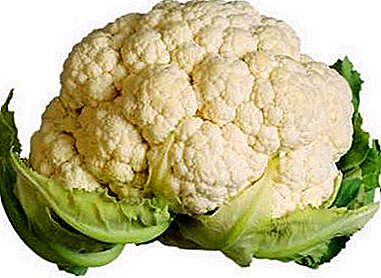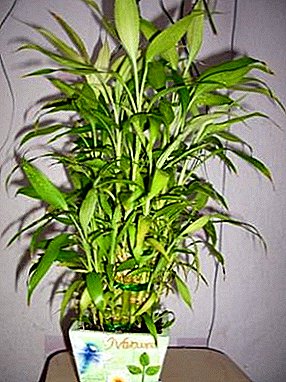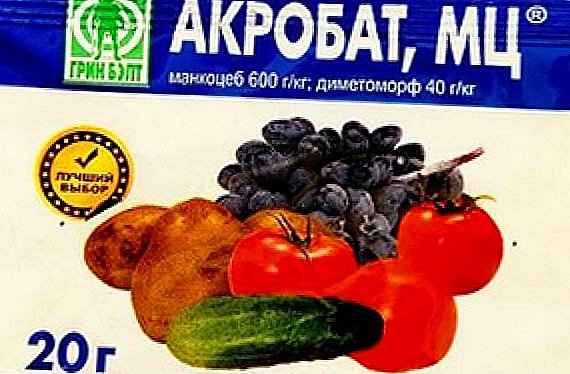 "Enroflon" - an antibacterial veterinary drug, successfully used to treat farm animals and poultry. The antibiotic suppresses the vital activity of many pathogenic bacteria and mycoplasmas, allowing the diseased individuals to recover in the shortest possible time. It can be used as a preventive measure to prevent an epidemic when it is threatened, or during those periods of a bird’s life when it is most vulnerable to dangerous microorganisms.
"Enroflon" - an antibacterial veterinary drug, successfully used to treat farm animals and poultry. The antibiotic suppresses the vital activity of many pathogenic bacteria and mycoplasmas, allowing the diseased individuals to recover in the shortest possible time. It can be used as a preventive measure to prevent an epidemic when it is threatened, or during those periods of a bird’s life when it is most vulnerable to dangerous microorganisms.
Dosage Form
Release "Enroflon" in four dosage forms:
- powder;
- pills;
- injection;
- oral solution.
For the treatment of poultry use only the latest dosage form. The solution looks like a light, slightly yellowish, clear liquid.  Enroflon can have a different concentration of the active substance - 2.5%, 5% and 10%.
Enroflon can have a different concentration of the active substance - 2.5%, 5% and 10%.
Important! For birds, Enroflon 10% is intended, which in 1 ml contains 100 mg of active ingredient. The preparation is given to the birds only orally, by dropping it into the beak from a pipette or by adding it to a container with drinking water.
Release form, composition and packaging
The composition of 1 ml of the drug includes:
- active ingredient - enrofloxacin - 100 mg;
- potassium hydroxide - 25 mg;
- benzyl alcohol - 0.01 ml;
- Trilon B - 10 mg;
- purified water - up to 1 ml.
In addition to enrofloxacin, all other substances are fillers. Release the drug in bottles of glass or plastic, which can be both transparent and darkened.
Prepackaged in bottles of the following capacity:
- 5 ml;
- 10 ml;
- 100 ml;
- 200 ml;
- 250 ml;
- 500 ml;
- 1 l.
Each bottle is supplied with a label with Russian-language data: the name of the product, the name of the manufacturer and the other necessary information (serial number and date of manufacture, expiration date, storage conditions). Always accompanied by detailed instructions. The label is labeled "For animals".
Always accompanied by detailed instructions. The label is labeled "For animals".
Pharmacological properties and effects
"Enroflon" is an effective medicine that belongs to the group of fluoroquinolones and is used in diseases of poultry bacterial and mycoplasmal infections. The tool has a pronounced bactericidal effect of a broad spectrum and is effective against most gram-positive and gram-negative bacteria, as well as mycoplasmas.
The antibacterial effect of the drug is caused by the fact that enrofloxacin inhibits bacterial DNA synthesis, preventing their division, further reproduction and disrupting the ability of the existing bacterial organisms to live.
The active substance quickly and unobstructedly penetrates the bacterial cell through its protective membrane and causes serious, incompatible with vital activity, morphological changes inside the cell, which causes the bacteria to quickly die.
Did you know? Enrofloxacin in the liver is transformed into ciprofloxacin, which is effective even for the treatment of tuberculosis caused by mycobacteria of this disease.
Bacteria die en masse due to the fact that a violation of bacterial DNA synthesis occurs due to the suppression of bacterial DNA gyrase. Morphological changes that are incompatible with the vital activity of bacteria are caused by the destructive effect on bacterial RNA, which causes the stability of its membranes, and the metabolic processes inside the cell become impossible.
Enrofloxacin resistance in bacteria develops slowly, as the substance disrupts the DNA helix replication process. For antibiotics of another mechanism of action, resistance does not occur at all.
The wide spectrum of action of enrofloxacin makes it effective against most bacteria, such as, for example:
- pseudoprous;
- E. coli;
- enterobacteria;
- salmonella;
- hemophilus bacillus;
- Klebsiella;
- pasteurella;
- bordetella;
- campylobacter;
- corynebacteria;
- staphylococcus;
- streptococci;
- pneumococci;
- clostridia;
- mycoplasma.

Important! The drug has no pronounced pharmacological activity against anaerobic bacteria.
When absorbed in the gastrointestinal tract, Enroflon rapidly penetrates the blood. It enters all tissues and organs, without affecting only the nervous system.
Already after 1-3 hours there is a maximum concentration of the active substance in the blood. Enrofloxacin is practically not bound to plasma proteins and therefore quickly penetrates into all organs and tissues. It easily passes through the cell membranes of both animal and bacterial cells. Once inside the animal cell, the substance penetrates into the bacteria that hit the cell, and causes a violation of their morphology.
The maximum concentration of the drug is stored in the tissues for about 6 hours, after which its level begins to decrease.
The therapeutic effect becomes noticeable already 24 hours after the first use of the drug. Enrofloxacin is excreted from the body almost unchanged in bile and urine. However, in the liver it can be partially metabolized to ciprofloxacin, another broad spectrum antibacterial substance from the group of fluoroquinolones.
Find out which broad-spectrum antibiotics can be given to chickens.
 "Enroflon" is a low-toxic drug for the body, as it is displayed almost unchanged. It is classified as a drug from the 4th hazard group, which means that the substance is recognized as low hazard.
"Enroflon" is a low-toxic drug for the body, as it is displayed almost unchanged. It is classified as a drug from the 4th hazard group, which means that the substance is recognized as low hazard.
Did you know? Although fluoroquinolones exhibit pronounced antibacterial activity, they are not, by their nature, antibiotics, since they have a completely different origin and structure. These are synthetic analogues of natural antibiotics.
Indications for use of the drug
The indications for the use of Enroflon in poultry are all bacterial and fungal diseases caused by bacteria sensitive to fluoroquinolones. Among these diseases, there are:
- bacterial bronchitis;
- enzootic and bacterial pneumonia;
- atrophic rhinitis;
- enteritis;
- mycoplasmosis;
- colibacteriosis;
- salmonellosis;
- other infections caused by the above bacteria;
- secondary infection.
Most often, chickens, ducklings, goslings, young turkeys and pheasants suffer from colibacillosis.
The drug is also used to prevent bacterial infections in chicks and adult birds.  Salmonellosis in chickens
Salmonellosis in chickens
Application procedure
"Enroflon" is used in poultry farming both for the treatment of adult herds, and for the treatment and prevention of young stock from the first days of life. It is suitable for the treatment of chickens, turkey poults, goslings, all adult poultry, including broilers, which are known for weak immunity to many different infections.
For chickens
Chickens are most susceptible to disease in the first month of life. They have not debugged the mechanism of thermoregulation, weak immunity, so they can easily be blown through by a draft or they will overheat and then overcool.
An important aspect of the prevention of chickens' diseases is a properly formulated diet.
There are also frequent cases when buying already hatched chickens from private hands, that the chicks are already infected due to the fact that the farmers selling them neglect the safety of the incubation period. Therefore, it is possible to give Enroflon from the first day of life to both purchased chickens and self-bred chickens to prevent the occurrence of possible diseases. 
Find out which infectious and non-infectious diseases affect broiler chickens and how to treat them, as well as what drugs should be in the first-aid kit of the broiler chickens owner.
It is very simple to give the drug to the chicks - it is enough to simply dissolve the required amount of medicine with water to drink the young. The amount of water taken is what is necessary for chicks for 1 day. And the amount of the drug should match the proportion of 0.5 ml of the drug per 1 liter of water.
Enroflon is diluted in water, which is then offered to the chickens. The solution can be prepared in the evening, so that by the morning the cubs already have ready to drink, and you do not waste time on its preparation.
Prevention, like treatment, usually lasts 3 to 5 days. During this time, the chicks are offered only the water in which the medicine is dissolved. Other, clean water should not be given.
The use of the drug for prophylactic purposes allows you to protect the entire brood from infections that in a few days are able to mow the entire herd.
Important! It is recommended to give to the chicks “Enroflon” from the first day of life and during periods when chickens are most sensitive to bacterial infections. These are periods from 1 to 5 days of life, from 20 to 25 days and from 35 to 40 days of life.
For poults
Despite the fact that adult turkeys - the birds are strong and rarely get sick, their offspring from 5 to 10 days of life is very weak and prone to the emergence of many serious diseases. In turkey poults, gastrointestinal infections, inflammation of the bronchi and lungs, and even diseases of the joints can occur. Therefore, young animals are recommended to give enrofloxacin for the prevention of all these diseases. The drug is diluted in water at a dosage of 0.5 ml of the drug per 1 liter of clean drinking water.  However, newborn turkey poults do not have a good appetite, they even reluctant to drink. Therefore, you need to make sure that the young ones drink the prepared amount of liquid.
However, newborn turkey poults do not have a good appetite, they even reluctant to drink. Therefore, you need to make sure that the young ones drink the prepared amount of liquid.
It is noticed that the best turkey poults drink from the nipple drinkers when they see a drop hanging from the nipple.
Ensure that the water is not cold or polluted. Offer turkeys water from time to time so that they do not forget to satisfy their thirst.
For goslings
Goslings are considered the strongest and healthiest birds. Youngsters usually grow well and rarely get sick. They have a good immunity from birth. However, there are cases when the goslings of the first month of life become seriously ill.
This happens rarely if the chicks are bred with their own hands in compliance with all breeding rules. But if the young were acquired from other hands, this does not guarantee that the parents of the goslings or eggs were not infected. Therefore, for preventive purposes, you can give the new brood Enroflon at the beginning of life.
Find out what you need to feed goslings in the first days of life.
 Goslings are offered water with a solution of the drug diluted in it. 0.5 ml of Enroflona is added to 1 l of liquid.
Goslings are offered water with a solution of the drug diluted in it. 0.5 ml of Enroflona is added to 1 l of liquid.
For adult birds and broilers
For adults, the drug is given as a treatment for infectious diseases. For broilers, this is of particular importance, since they have lost their immunity as a result of numerous breeding works and are highly susceptible to bacterial infections.
An adult herd is given medicine in the same way as the young, by diluting 0.5 ml or 1 ml of the preparation in 1 liter of water. The main condition for successful treatment is the timeliness of the treatment measures provided. So, birds need to start giving Enroflon when the first signs of a bacterial infection appear:
- loose stools, especially if there are unusual differences in color and texture;
- lethargy, lethargy, drowsiness;
- separation of mucus from the nasopharynx;
- if eyes watery and festering;
- if there are wheezing, audible birds from the chest.

Important! The main rule of treatment of farm birds "Enroflon" - dilute 10% of the drug in drinking water at the rate of 0.5-1 ml of medicine per 1 liter of water. The treatment lasts 3-5 days. At this time, only water with medicine is given to the flock; you should not give it clean.In the treatment of salmonellosis, the dosage of the drug should be twice as much as usual, respectively, 1-2 ml of the drug per 1 liter of water.
Usually, only one course of enrofloxacin is required for complete recovery. In the event of complications, you can repeat the course of treatment, but in this case it is necessary to consult a veterinarian for advice.
Side effects
Usually, when the indicated dosage is observed and with the short-term use of any side effects in birds, it is not observed.
However, fluoroquinolones, like antibiotics, have a destructive effect not only on pathogens, but also on beneficial bacteria in the intestines. Thus, the natural intestinal microflora can be completely destroyed, which is fraught with such disorders:
- digestive disorders;
- slow weight gain;
- loose stools;
- change in color and consistency of the litter.
Find out what causes diarrhea in chickens.
With prolonged use, with exceeding the required dosage, or with particular sensitivity of a particular individual to the active substance of the drug in birds, these side effects may occur.  In rare cases, some individuals may experience an allergic reaction to enrofloxacin. In this case, you should stop taking fluoroquinolones completely, give the bird an antihistamine, and continue the treatment of a bacterial infection with a conventional antibiotic.
In rare cases, some individuals may experience an allergic reaction to enrofloxacin. In this case, you should stop taking fluoroquinolones completely, give the bird an antihistamine, and continue the treatment of a bacterial infection with a conventional antibiotic.
Important! Meat of birds treated with enrofloxacin cannot be eaten by humans for 11 days after the last dose of the medicine. The eggs of laying hens are also removed from consumption as they also contain a high concentration of fluoroquinolones.Meat treated birds before the expiration of the 11-day period can be used only in two cases:
- for feeding other animals;
- for the manufacture of meat and bone meal.

Contraindications to the use of the drug
Enroflon has a number of contraindications when the medicine should not be given to birds.
- In diseases and lesions of the kidneys and liver. The drug is excreted by these organs, and if they do not function properly, then the body simply cannot get rid of the fluoroquinolones.
- With individual intolerance to the active substance or hypersensitivity to it.
- If you are allergic to fluoroquinolones.
- Together with bacteriostatic antibiotics - "Levomitsetinom", "Tetracycline", macrolides.
- When applying "Theofillina".
- Together with steroids.
- If used in parallel indirect anticoagulants.
- If birds receive preparations containing iron, aluminum, calcium and magnesium, as these substances adversely affect the absorption of the drug. In the event that it is impossible to stop taking the above substances, then Enroflon must be given either 2 hours before or 4 hours after taking these substances.
Important! It is recommended to limit the stay of the birds treated by Enroflon in the open sun, as direct sunlight affects the individual's condition and significantly reduces the effectiveness of treatment.

Terms and conditions of storage
Storage of "Enroflon" is allowed at temperatures from +5 to +25. The place should be dark, protected from sunlight, dry, well ventilated.
Store the drug is permissible only in those places where children do not have access. Expiration date, subject to all storage conditions - no more than 5 years from the date of manufacture.
Enroflon is an anti-infective drug with a pronounced antibacterial effect. It is widely used to treat poultry against many bacterial infections. The drug is effective and low toxic, since after reaching the maximum concentration in the tissues and organs is completely eliminated with urine and bile.












